With the animated feature, The King of Kings, currently doing the rounds, Cinema Paradiso looks at the films that have been adapted from the writings of Charles Dickens.
Written in the late 1840s, The Life of Our Lord was never intended for publication. Charles Dickens produced it to teach his three children about the gospel stories and it played a central role in the family's Christmas celebrations, as he read it aloud each year. When his last surviving son, Sir Henry Fielding Dickens, died in 1933, it was decided to serialise the text in newspapers in Britain and America before it was made available in book form.
Eighty years on, Angel Studios has acquired the rights and entrusted them to South Korean director Jang Seong-ho to make his feature debut with The King of Kings. Angel specialises in 'Godly movies the whole family can enjoy' and clearly hopes this animated excursion from Victorian London to Judea in Roman times will find a sizeable Easter audience.
Cinema Paradiso users who remember our festive article, 12 Scrooges of Christmas, might notice the similarity between this screenplay and A Christmas Carol, as Dickens (Kenneth Branagh) and his young son, Walter (Roman Griffin Davis), get to witness the key events in the life of Jesus Christ at first hand, after the author's wife, Catherine (Uma Thurman), suggests that he tells the Camelot-obsessed child the story of a king whose power surpasses that of King Arthur.
The Great Inimitable
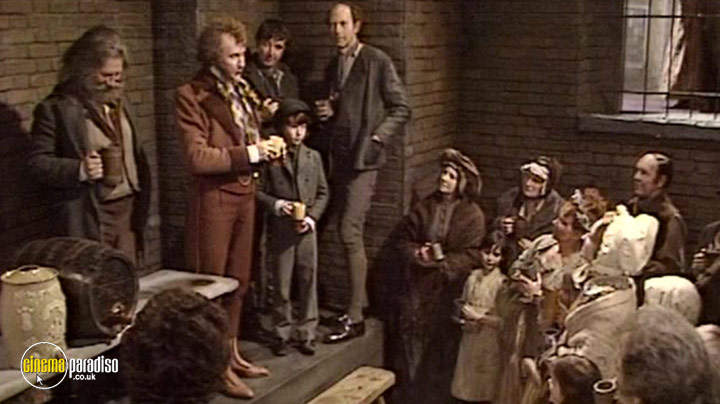
Charles John Huffam Dickens was born in Portsmouth on 7 February 1812. Napoleon Bonaparte was still the French emperor and Jane Austen had yet to publish her first book, Sense and Sensibility. She is one of the most adapted novelists in the English language. But she can't come close to the 400+ films and television series that have been based on the works of a consummate storyteller and deeply flawed individual, whose life has been chronicled with varying degrees of reverence and veracity in Barry Morse's Mr Dickens of London (1967), Michael Ferguson and Marc Miller's Dickens of London (1976), Patrick Garland's The Mystery of Charles Dickens (2000), Ralph Fiennes's The Invisible Woman (2013), and Bharat Nalluri's The Man Who Invented Christmas (2017).
Dickens died a quarter of a century before moving pictures were first projected. But he was aware from his Chatham childhood of such forerunners of the projector as the magic lantern. Although he didn't use slides during his live readings, he compared London to a magic lantern that fired his imagination. So popular were his novels that lanternists knew audiences would be familiar with key scenes and this cross-over helped spread Dickens's fame to the working class, who particularly responded to such spooky tales as 'The Story of the Goblins Who Stole a Sexton' from The Pickwick Papers, and, of course, A Christmas Carol.
In 1862, a production of Dickens's story, 'A Haunted Man', at the Royal Polytechnic Institution in London employed a magic lantern device called 'Professor Pepper's Ghost' to create a supernatural apparition by casting an image on to a transparent surface on the stage. Such an effect forged a link with the silent adaptations of Dickens that abounded during cinemas first three decades. It's estimated that around 100 were made in Britain, France, Italy, and America, ranging from single shot items in the 1890s to two-reelers in the early part of the 20th century and full-length features with expensive sets and costumes in the 1920s.
In reviewing Grahame Smith's Dickens and the Dream of Cinema, Ken Mogg wrote on Senses of Cinema: 'Smith isn't just saying that Dickens had a filmmaker's eye; he is suggesting that Dickens helped shape and focus the conditions that were conducive to film, and thereby hastened the cinema's coming.' It's a bold assertion, but it was shared by no lesser luminary than Sergei Eisenstein, who claimed that all literature from Ancient Greece through William Shakespeare to Charles Dickens had an influence on the way stories are told on screen. 'It is only very thoughtless and presumptuous people,' Eisenstein wrote, 'who can erect laws and an aesthetic for cinema, proceeding from premises of some incredible virgin-birth of this art!'
Pioneering director D.W. Griffith concurred. When asked about his use of close-ups, dissolves, and cross-cuts to fashion a screen grammar, he cited Oliver Twist in stating 'Well, doesn't Dickens write this way?' The coming of sound made the moving image less dependent upon such visual language. But talkies enabled audiences to hear the spoken word and helped film-makers bring Dickens to even more vivid life. Here are just some of he best-known examples of the films, teleplays, animations, and serials derived from the novels that are listed in the chronological order of their publication.
The Pickwick Papers
Dickens was just 24 when Chapman & Hall published the first novel written under his own name. William IV was king and Britain was still feeling the effects of the latest phase of the Industrial Revolution. As it was set in the 1820s, the England depicted in The Pickwick Papers is somewhat idealised, although Samuel Pickwick does get to discover the vagaries of the justice system after he is sued for breach of promise by landlady Martha Bardell.
In Britain, Walter R. Booth's Mr Pickwick's Christmas At Wardle's (1901) was followed by James Williamson's Gabriel Grub the Surly Sexton (1904), while Wilfred Noy supervised Pickwick versus Bardell and Mr Pickwick in A Double-Bedded Room (both 1913). Although the Williamson can be found on the BFI's Dickens Before Sound (2006), the others are all lost, as are Edison's A Knight For a Knight (1909) and Mr Pickwick's Predicament (1912). But it is possible to see Lawrence Trimble's ambitious 15-minute précis, The Pickwick Papers (1913), which starred celebrated American comedian John Bunny as Samuel Pickwick and which can also be rented from Cinema Paradiso as part of the BFI compilation.

As longer features became more common, it became possible to do more justice to the stories. Thomas Bentley, who would become something of a Dickens specialist, directed The Adventures of Mr Pickwick (1921), with Frederick Volpe in the title role alongside Hubert Woodward as Sam Weller and such stalwarts as Ernest Thesiger as Mr Jingle and Athene Seyler as Rachel Wardle. This is on the BFI's Most Wanted list of lost British films. But we can bring you Noel Langley's Pickwick Papers (1952), which remains the only sound feature made for cinema release. James Hayter took the title role, with Nigel Patrick playing Jingle, Harry Fowler as Weller, and Joyce Grenfell as Mrs Hunter. Intriguingly, music-hall legend George Robey guested as Tony Weller, while Athene Seyler returned to the story as Miss Witherfield.
Filmed at Nettlefold Studios, this became the first British picture to be shown in the Soviet Union during the Cold War. Such was its success in the UK that the BBC mounted a seven-part adaptation the same year, with George Howe as Pickwick. This was the first Dickens novel to be serialised, while ITV's recreation of the Wardle Hall party in Dingley Dell, A Charles Dickens Christmas (1956), became the first Dickens title to be colorised.
As versions of the narrative were produced in France and Italy, Harry Secombe headlined a musical variation on the text, Pickwick, which was adapted for television in 1969. But the genial gentleman only returned to the small screen when Nigel Stock led a fine cast that included Phil Daniels as Sam Weller in a 12-part BBC interpretation in 1985. This was the same year that Burbank Films released an animated version (one of eight highly creditable Dickens titles made by the Australian outfit), which was followed by the cult Irish item, Charles Dickens' Ghost Stories From The Pickwick Papers (1987). Bizarrely, no one has returned to Dickens's debut novel since. Surely, the time is ripe, even in a time of reduced TV budgets?
Oliver Twist
The most adapted novel in cinema history first went before the cameras in New York in 1897, when the American Mutoscope and Biograph company misspelt the name of the soft-hearted prostitute in The Death of Nancy Sykes (1897). R.W. Paul had less trouble with the spelling of Mr Bumble the Beadle (1898), but it wouldn't be until 1906 that Gaumont and Vitagraph went head-to-head with Oliver Twist and The Modern Oliver Twist, or The Life of a Pickpocket.
When the latter restored the story to its period setting for J. Stuart Blackton's Oliver Twist (1909) - the surviving parts of which form part of the aforementioned silent BFI collection - the original illustrations by George Cruikshank provided the inspiration for the scene of Fagin (William Humphrey) in a prison cell. Interestingly, the title role was taken by the adolescent Edith Storey, who retired at the age of 21 after making the 186 films that earned her a star on the Hollywood Walk of Fame.
To mark the Dickens centenary, the General Film Company hired stage star Nat C. Goodwin to play Fagin in a five-reel adaptation that stole a march on a British version that was produced by famed pioneer Cecil Hepworth and directed by Thomas Bentley, with Ivy Millais's Oliver and Alma Taylor's Nancy squaring off against John McMahon's Fagin and Harry Royston's Bill Sikes. Completing the trio of female Olivers, Marie Doro was paired with Tully Marshall in Jesse L. Lasky's Oliver Twist (1916). But this is as lost as Oliver Twist, Jr. (1921) and the British shorts, Nancy and Fagin (both 1922).
Charlie Chaplin, who had grown up in the very kind of London poverty that Dickens had described, based The Kid (1921) on the relationship between Oliver and Fagin. Fittingly, co-star Jackie Coogan was selected (at the grand old age of eight) to partner Lon Chaney in Scotsman Frank Lloyd's Hollywood silent, Oliver Twist, which is the highlight of the BFI's silent Dickens selection.
Dickie Moore would take the title role in Monogram's 1933 talkie version, which co-starred Irving Pichel as Fagin and William 'Stage' Boyd as Sikes. Moore, who appears in William J. Cowen's Charles Dickens (2006), continued to act until 1957, when he opened a publicity agency that he ran until 2010. By contrast, John Howard Davies, who headlined David Lean's Oliver Twist (1948), became a television executive whose credits included Steptoe and Son, All Gas and Gaiters, Monty Python's Flying Circus, The Goodies, Fawlty Towers, The Fall and Rise of Reginald Perrin, Not the Nine O'Clock News, Only Fools and Horses, Yes Minister, Blackadder, and Mr Bean. Slacker!
Setting new standards for the Dickens adaptation in postwar Britain, Lean confronted the poverty and degradation of the capital, with Robert Newton making a ferocious Sikes. But, coming just three years after the discovery of the Final Solution, Alec Guinness's Cruikshank-inspired Fagin was accused of being an anti-Semitic stereotype and it makes for even more discomfiting viewing almost eight decades later.
Rex Harrison, Peter Sellers, and Sidney James turned down the role when Lionel Bart was casting for his West End musical version of the story. Ron Moody so made Fagin his own on stage that he was retained for Carol Reed's Oliver! (1968), which cast the director's nephew, Oliver, as Sikes. Jack Wild played the Artful Dodger, while Mark Lester took the lead in a lavish production that, in spite of its catchy tunes, sprang a surprise when it won the Academy Award for Best Picture.
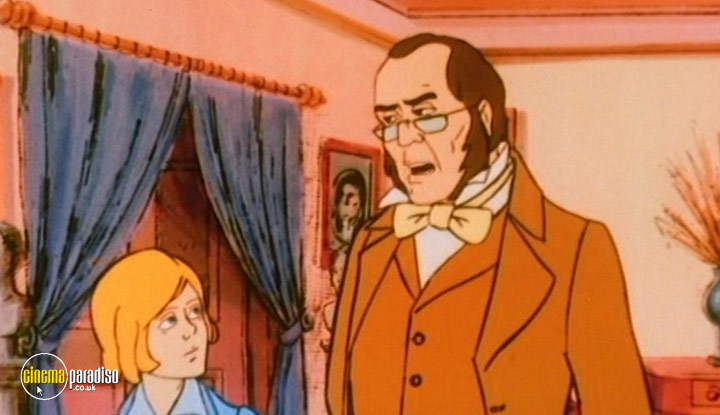
The story had first come to television in the United States in 1959, but it took another three years for the BBC to take the plunge, with a 13-part Oliver Twist (1962) that surrounded young Bruce Prochnik with such talents as Max Adrian (Fagin), Peter Vaughan (Sikes), Melvyn Hayes (Dodger), and Carmel McSharry (Nancy). Don't be put off by the monochrome images, this is powerful stuff and as much deserving of a viewing as Clive Donner's Oliver Twist (1982), which boasted George C. Scott as Fagin, Tim Curry as Sikes, and Timothy West as Bumble. Donner had edited Brian Desmond Hurst's Scrooge (1951).
While the Hallmark teleplay is currently off limits, the 1985 12-parter is available to Cinema Paradiso users as part of the BBC's fantastic Charles Dickens Collection. Ben Rodska is Oliver, while Eric Porter makes a menacing Fagin. Richard Dreyfus also did a decent job in Tony Bill's 1997 Disney adaptation, which cast 16 year-old Elijah Wood as Oliver. Back in Blighty, Liverpudlian Alan Bleasdale put his unique spin on the text, as he invented a handful of new characters for Renny Rye's 1999 ITV variation. Robert Lindsay and Andy Serkis teamed as Fagin and Sikes, while Keira Knightley played Oliver's Aunt Rose.
As the novel had meant so much to him as a Jewish boy in the Warsaw Ghetto, Roman Polanski made Oliver Twist (2005) for his own children, with Ben Kinglsey taking the role of Fagin alongside Barney Clark. Polanski takes plenty of liberties with the text, but this was par for the course around this time. After Seth Michael Donsky's Twisted (1996) had whisked the action to a New York brothel frequented by drag queens and child abusers, Jacob Tierney's Twist (2003) shifted the focus on to Dodger in relocating the story to modern Toronto. Tim Greene's Boy Called Twist (2004) pitched the action in Cape Town and cast Lesley Fong as a Rastafarian Fagin, while Martin Owen brought proceedings back to London for Twist (2001), which centres on a graffiti artist (Rafferty Law) becoming embroiled in a gang run by Fagin. He's played by the 86 year-old Michael Caine, who had failed to land the role of Sikes when auditioning for Lionel Bart's musical six decades earlier.
Speaking of offbeat adaptations, the novel has inspired several animations. Two years after William Hanna and Joseph Barbera had made Oliver and the Artful Dodger (1972), Davy Jones of The Monkees voiced
Dodger in former Disney artist Hal Sutherland's Oliver Twist (1974). Then, following standard versions by Burbank Films (1982) and Emerald City (1986), Mexican animator Fernando Ruiz released Las Aventuras de Oliver Twist (1987). But the most widely seen animation was Disney's Oliver & Company (1988), which set the action in modern-day New York, as a homeless kitten falls in with a gang of street dogs.
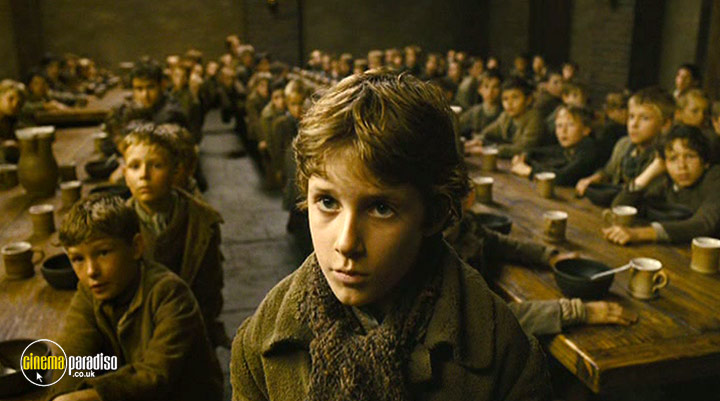
When it comes to Dickens serials, no one does it quite like Auntie Beeb, as Coky Giedroyc's Oliver Twist (2007) testifies. This five-part adaptation sees Nancy (Sophie Okonedo) try protect a waif (William Miller), as he strives to hold his own against Mr Bumble (Gregor Fisher), Bill Sikes (Tom Hardy), Fagin (Timothy Spall), and the resistible Monks (Julian Rhind-Tutt). No doubt further versions will emerge over time. Perhaps one of the lost silents will be found. But there is little chance of Oliver Twist or A Christmas Carol being caught as the most-adapted Dickens favourites.
Nicholas Nickleby
The third novel published with the early serial chapters being credited to Boz, The Life and Adventures of Nicholas Nickleby first came to the screen in 1903, when Alf Collins directed Dotheboys Hall; or, Nicholas Nickleby (1903), a three-minute single-shot depiction of Nicholas's showdown with Wackford Squeers over the abused Smike. Made for the centenary of the author's birth and running ten times longer, Nicholas Nickleby (1912) was directed by George O. Nichols and is the fifth of the six Dickens adaptations produced by American Dickens devotee Edwin Thanhauser. Cinema Paradiso users can see Harry Benham take the title role alongside Justus D. Barnes as Uncle Ralph via the BFI's silent Dickens anthology.
Three decades later, Alberto Cavalcanti directed the first sound version, The Life and Adventures of Nicholas Nickleby (1947), for Ealing Studios. Derek Bond starred opposite Cedric Hardwicke as Ralph and Stanley Holloway as itinerant player, Vincent Crummles. Coming between the revered David Lean duo, this has not been given a fair crack of the critical whip, even though John Dighton's meandering screenplay overly indulges in pathos in the closing stretch.
Sadly, the various BBC versions are unavailable, with the 1957 adaptation with William Russell having been lost forever. Martin Jarvis took the lead in the 13-episode 1968 edition and he was succeed by Nigel Havers in the six-part variation broadcast in 1977. Channel Four showed the Royal Shakespeare Company's acclaimed 1982 staging, with Roger Rees headlining The Life and Adventures of Nicholas Nickleby, which earned an Emmy when it aired in the United States.
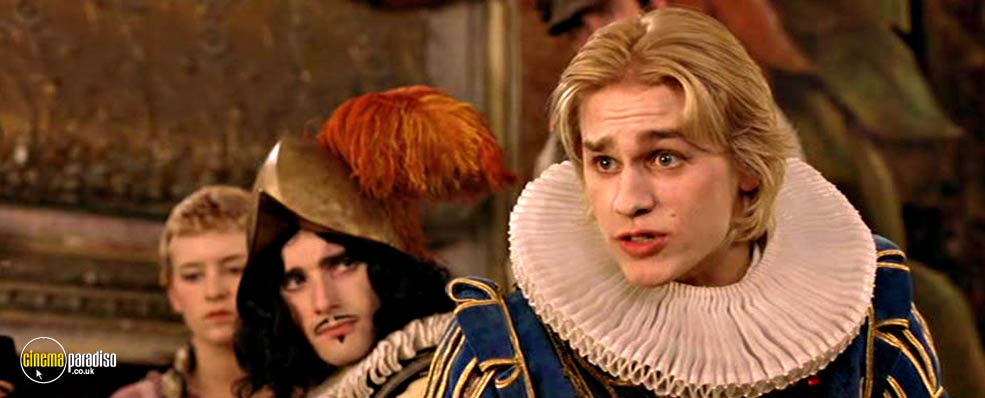
Following Burbank's animation, Nicholas Nickleby (1985), the story slipped into the shadows until ITV drew a BAFTA for Barbara Kidd's costumes in The Life and Adventures of Nicholas Nickleby (2001), which paired James D'Arcy and Charles Dance as Nicholas and Uncle Ralph. The following year, Douglas McGrath directed Charlie Hunnam in Nicholas Nickleby (2002), a stellar big-screen take that cast Nathan Lane as Crummles, Barry Humphries as Mrs Crummles, Christopher Plummer as Ralph, Anne Hathaway as Madeline Bray, and Jim Broadbent and Juliet Stevenson as Wackford and Mrs Squeers. We sense a NN double bill coming on.
The Old Curiosity Shop
Heavily influenced by events within Dickens's own family, The Old Curiosity Shop was filmed several times in the silent era, when its sentimentality and moralising chimed in with contemporary sensibilities. Few of these films have survived intact, whether they are Gaumont's Little Nell (1906), Essanay's 1909, Thanhauser's 1911, or Britannia's 1912 interpretation of The Old Curiosity Shop.
Coming two years later was the first of three versions of the novel directed by the estimable Thomas Bentley. The 1914 and 1921 editions were silent, but his 1934 talkie, The Old Curiosity Shop, offers a fascinating glimpse into how British cinema approached Dickens with an eye to the domestic and export markets. Hay Petrie plays the evil Quilp, while 14 year-old Elaine Benson and Ben Webster play Nell Trent and her gambling grandfather.
Reginald Purdell and Polly Ward assumed the roles of Dick Swiveller and The Marchioness that were taken in the 1954 US television spin-off, The Small Servant, by Laurence Harvey and Diane Cilento. Almost a decade later, the BBC cast future Doctor Who Patrick Troughton as Quilp in a 13-part serialisation that has sadly been lost. We also currently can't lay our hands on a disc of Elmer Bernstein's musical, Mr Quilp, which saw Michael Tuchner direct Anthony Newley in the title role, David Hemmings as Swiveller, Michael Hordern as Grandfather Edward, and Sarah-Jane Varley as Nell.
Natalie Ogle and Sebastian Shaw essayed the Trents in William Trevor's nine-part BBC version of The Old Curiosity Shop (1979), which cast Trevor Peacock as Quilp. Following on from the Japanese anime series, Wandering Girl Nell (1979-80), Burbank released its animated take on The Old Curiosity Shop in 1984, with Warwick Gilbert calling the shots. Disney was not tempted to cartoonise the text, although Kevin Connor directed a four-part live-action reworking of The Old Curiosity Shop (1995), with Peter Ustinov as the grandfather, Sally Walsh as Nell, and Tom Courtenay as Quilp.

When Brian Perceval directed The Old Curiosity Shop as a 2007 TV-movie, Toby Jones played Quilp menacing Derek Jacobi and Sophie Vavasseur. More recently, Imogen Faires took on the mantle of Little Nell, whose fate was interwoven with stories taken from other tales in the 20-part mash-up, Dickensian (2015). No one has yet, however, taken up the challenge to produce a parodic version laid down by Oscar Wilde when quipped, 'One must have a heart of stone to read the death of Little Nell without laughing.'
Barnaby Rudge
Set against the anti-Catholic Gordon Riots of 1780, as a Britain divided by class and prejudice sought a scapegoat for the loss of the American Colonies, Barnaby Rudge is one of Dickens's least fashionable novels. Such is its ambitious scope that it has yet to be adapted as a feature film. However, Alf Collins and Charles Brabin both based shorts entitled, Dolly Varden (1906 & 1913), on the story's most memorable female character.
These films are considered lost, as is Thomas Bentley's five-reel Barnaby Rudge (1915), which was one of the most ambitious pictures produced in Britain during the Great War. Producer Cecil Hepworth had 18th-century London sets built at his studio in Walton-on-Thames and cast Chrissie White as Dolly alongside American actor Tom Powers as Barnaby, Jr.

Fortunately, the BBC's 13-part Barnaby Rudge (1960) has survived and it can be rented from Cinema Paradiso. John Wood plays the naive hero who confides in his pet raven, Grip, to the consternation of his mother, Mary (Isabel Dean). Meanwhile, Joe Willet (Alan Haywood), feuds with his father, John (Arthur Brough), the landlord of the Maypole Inn that is frequented by locksmith Gabriel Varden (Newton Blick), whose daughter, Dolly (Jennifer Daniel), is scolded by her mother (Joan Hickson) for being distraught that Joe has joined the army and is being sent across the Atlantic to fight the rebels. Don't be put off by the fact it's in black and white. This makes for compelling, if sometimes confusing viewing.
Martin Chuzzlewit
It's often said that film versions of Martin Chuzzlewit have been so scarce because the novel has a pronounced anti-American slant. What's conveniently forgotten, however, is that many Hollywood movies similarly show the demerit side of the American character. Dickens deplored what he had seen of frontier life while touring the United States in the early 1840s and many of the harsh truths he exposed resurface in the numerous studio Westerns set either side of the Civil War. Sales of the novel proved disappointing, but the issues it raised seem ripe for reassessment in the light of recent and ongoing events.
Made to mark the 1912 centenary, Oscar C. Apfel and J. Searle Dawley's Martin Chuzzlewit compressed the essential action into three reels. This appears to be lost, which is a shame as Seth Pecksniff is played by Charles Ogle, who had been the screen's first Frankenstein monster two years earlier. A two-reel 1914 Biograph adaptation directed by Travers Vale and starring Alan Hale reportedly still exists, but it's not currently accessible.
At least it's residing in an archive. The 12-part 1954 version with Donald Wolfit as Pecksniff and the 13-part adaptation written by Constance Cox and directed by Joan Craft in 1964 have both seemingly been wiped by the BBC. However, someone took care to record Martin Chuzzlewit (1994), which can be rented from Cinema Paradiso as part of the Charles Dickens Collection. Told in six episodes, novelist David Lodge's interpretation cast Paul Scofield as both Old Martin and his evil brother, Anthony, alongside Tom Wilkinson as Pecksniff, Pete Postlethwaite as Montague Tigg, Elizabeth Spriggs as Sarah Gamp, John Mills as Mr Chuffey, Joan Sims as Betsey Prig, and Ben Walden in the title role. Given the rarity of screen versions of this overlooked novel, this has to be considered something of a treat.
Dombey and Son
Published at the end of a period of writer's block, Dombey and Son has been rather neglected by film-makers since Maurice Elvey produced the first silent version in 1917. The first sound adaptation even ditched the original title, but John Cromwell's Rich Man's Folly (1931) failed to find critical favour, despite the best efforts of George Bancroft as Brock Trumbull, who was based on Paul Dombey, Sr.
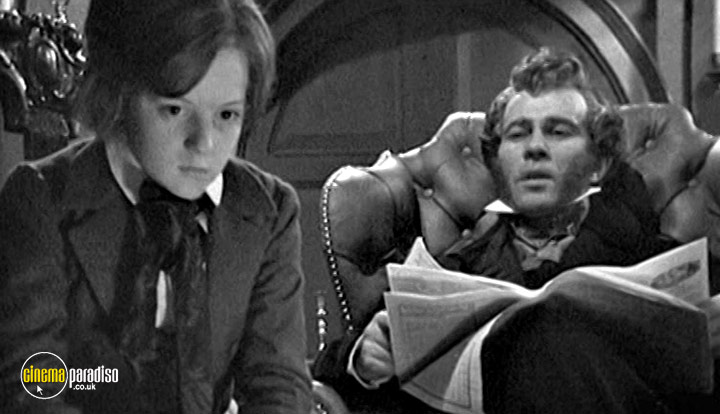
The reviews were much warmer for the BBC's 13-episode Dombey and Son (1969), which was directed by Joan Craft and scripted by Hugh Leonard. John Carson plays the widowed owner of a shipping line who has little time for his devoted daughter, Florence (Kara Wilson), and who gets duped by into a second marriage by the scheming Major Bagstock (Clive Swift).
Following a 1974 Soviet teleplay, starring Valentin Gaft as Paul Dombey, the Beeb took another tilt in a 10-part 1983 retelling that was directed by Rodney Bennett and cast Julian Glover as Dombey. It's a shame we can't currently bring you this fine interpretation and also out of reach is Laurent Jaoui's French mini-series, Dombais et fils (2007), which starred Christophe Malavoy as Charles Dombais. However, you'll have to blame the BBC for the fact that ace adapter Andrew Davies was thwarted the following year in his efforts to adapt Dombey and Son, as it was claimed there had been too many 'bonnet dramas' and the viewing public wanted something more up to date. Maybe there's a draft script somewhere that could be dusted down...?










































